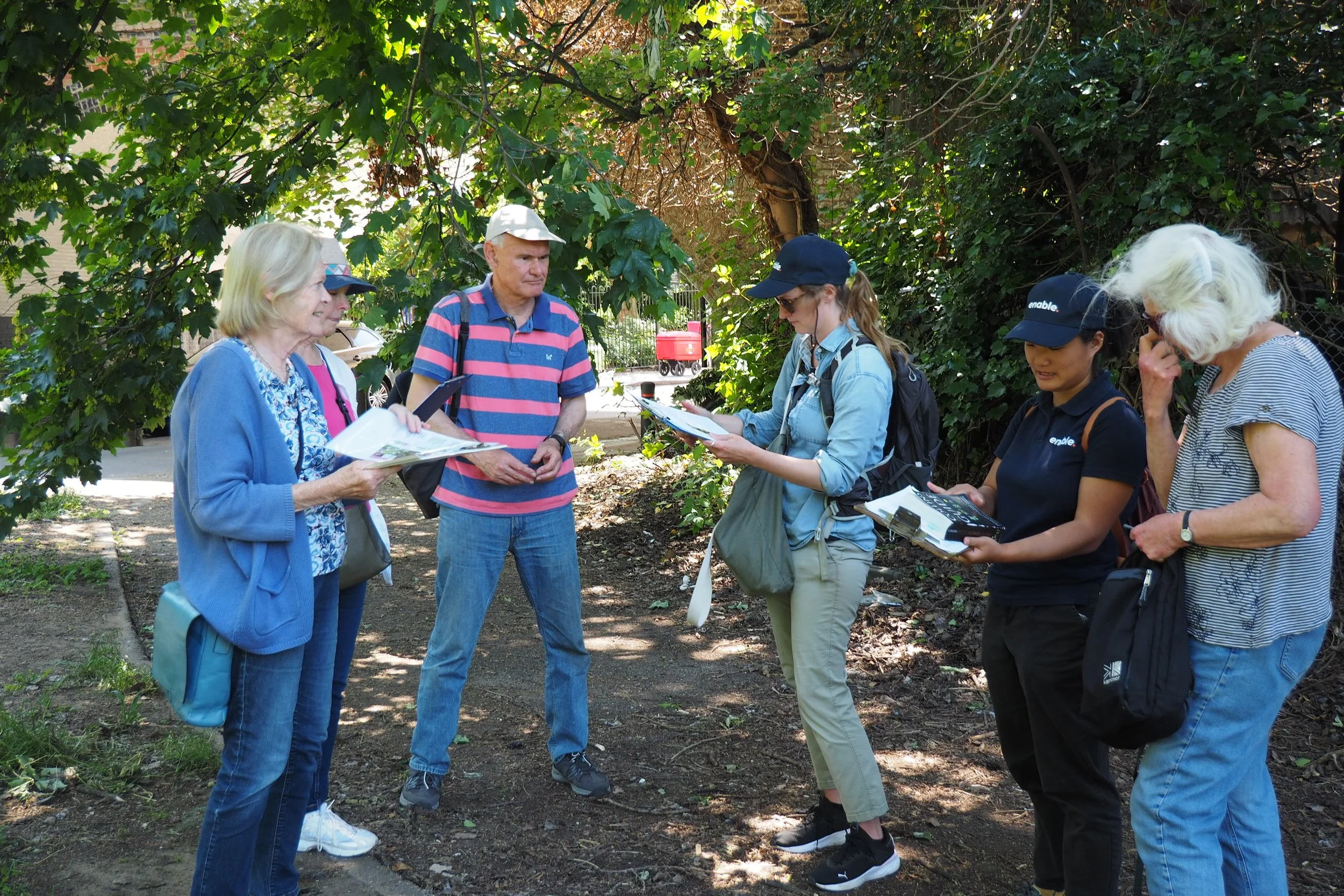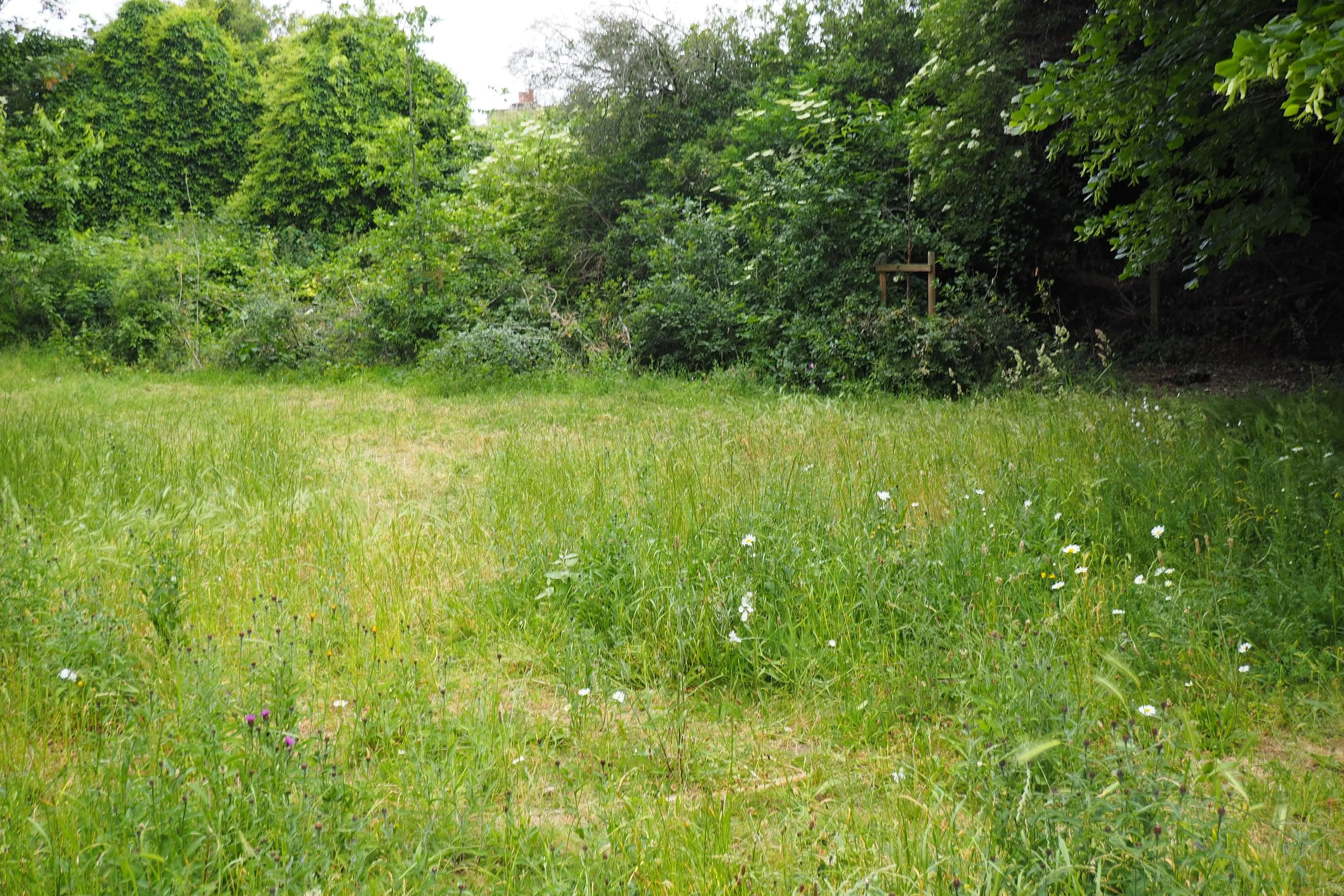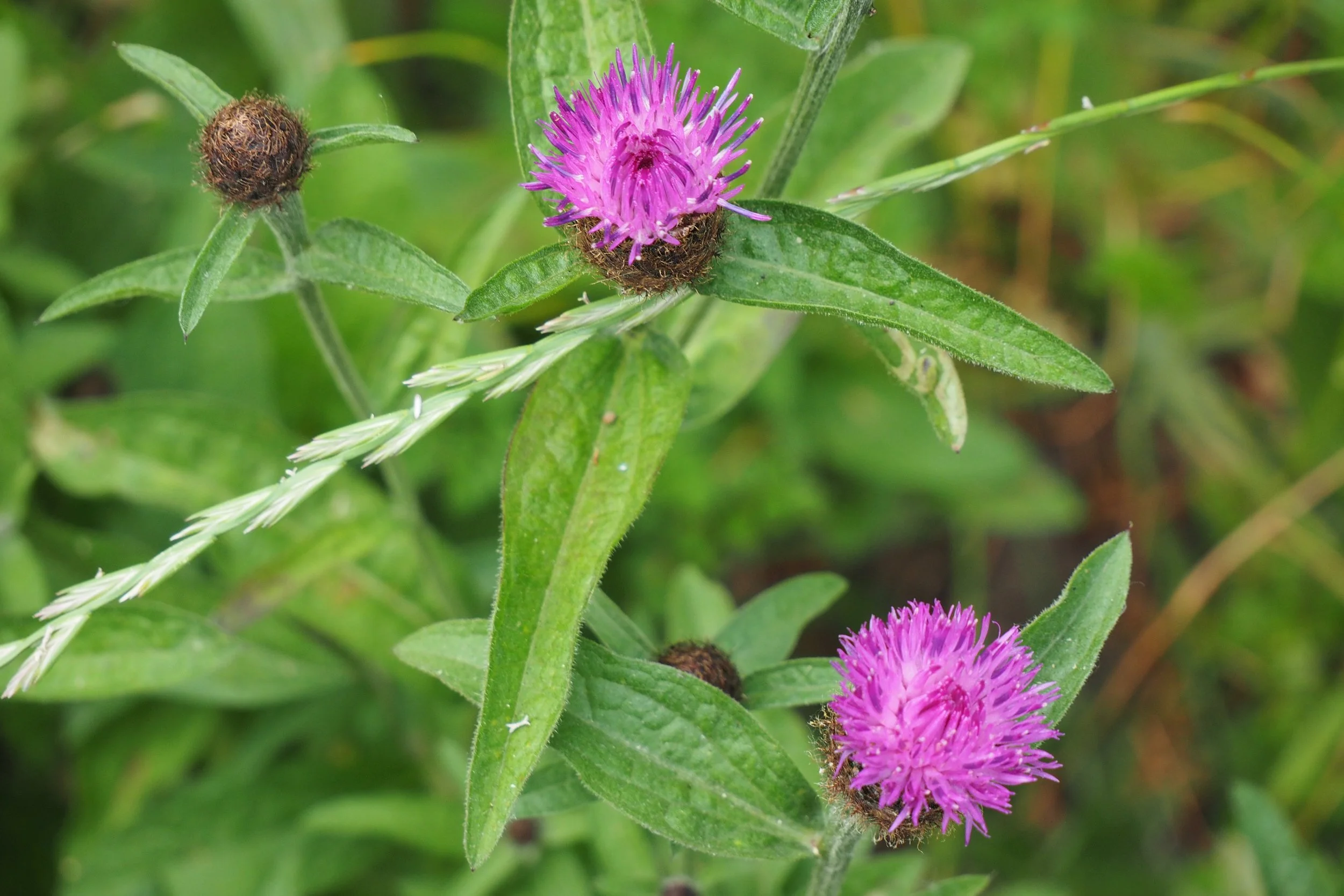Wildflowers in Falcon Park
by Clare Graham, Chair, Open Spaces Committee
We were delighted to join Enable’s Biodiversity Team in early June to survey the wildflowers and grasses in an unmown area of Falcon Park. Within this relatively small patch, we were able to identify twenty-nine different species.
The Battersea Society’s first wildflower survey
The group assembles on site.
By now most of us will be familiar with the idea of No Mow May, the charity Plantlife's national campaign which Wandsworth has subscribed to for some years now. Selected areas of suitable open spaces are left unmown, and then in early June comes the fun of seeing what has come up within them. Enable Biodiversity carries out a series of surveys across the borough, and this year also offered Friends' groups and amenity societies like ours the chance to get involved in a 'citizen science survey'. Enable provided the expertise, and did the recording—I just had to drum up a few fellow Committee and Society members with a couple of hours free to do some flower-spotting, which did of course also involve some stooping, as well as some standing around to learn about what we were finding. Then the six of us met up at the chosen site with Enable team members Brieannah and Ling on a sunny afternoon.
Falcon Park’s northernmost triangle
View of the survey site.
We were focussing on the small triangular area of Falcon Park to the north of the bike and footpath that connects Cabul Road to Latchmere Passage, and through to Latchmere Road. That's situated between two railway embankments, and until a few years ago was closed off behind railings with no public access. Long before that there had been a single-storey building on the site, used to store park maintenance equipment. That got taken down many years ago, but the soil within this triangular area remains thin, and full of stone chippings. An old drive on the west side had also been left intact, since that’s needed by Network Rail for occasional parking and access to its electrical substation beyond gates at the park's north end. When the railings came down as part of improvements to this end of the park in 2019, Enable left the mature trees in place, and did some new planting for biodiversity along the eastern embankment. But it left the central area alone as a potential habitat for wildflowers, most of which actually prefer poor soil.
A rich variety of species
Common knapweed, growing on the survey site.
From the path this area looked a bit scruffy and unpromising, perhaps. A couple of trees on the western embankment had actually fallen down across it a few weeks previously, crushing some of the vegetation. Those had been cleared away, but on the edge of the path in particular we encountered rubbish dropped by passers-by, despite the presence of three litter-bins directly opposite, on the other side of the path. Nevertheless, as we explored the site we encountered a rich variety of species, spending a most delightful hour and a half spotting and learning about no fewer than twenty-nine different wildflowers and grasses. The full official list, kindly supplied by Enable, is given below. Hopefully next year we'll be able to repeat the survey, and see what else has come up. As it proved such an enjoyable afternoon, we'd also like to try and give all Society members the chance to participate. There's a maximum group size of fifteen, so we'll aim to set a date well in advance and advertise for participants.
The species we found growing
Green alkanet, one of the borage family.
[Listed by family, then comes their species, then their common name.]
1 Apiaceae, Anthriscus sylvestris, Cow parsley;
2 Apiaceae, Apiaceae sp., Carrot-family species;
3 Asteraceae, Achillea millefolium, Yarrow;
4 Asteraceae, Bellis perennis, Common daisy;
5 Asteraceae, Centaurea nigra, Common knapweed;
6 Asteraceae, Hypochaeris radicata, Cat's ear;
7 Asteraceae, Sonchus oleraceus, Smooth sow-thistle;
8 Asteraceae, Taraxacum sp., Dandelion;
9 Boraginaceae, Pentaglottis sempervirens, Green alkanet;
10 Brassicaceae, Capsella bursa-pastoris, Shepherd's purse;
11 Brassicaceae, Sisymbrium officinale, Hedge mustard;
12 Caryophyllaceae, Cerastium fontanum, Common mouse-ear, chickweed;
13 Caryophyllaceae, Silene latifolia, White campion;
14 Caryophyllaceae, Silene latifolia x dioica, White/red campion hybrid;
15 Fabaceae, Cracia sativa, Common vetch;
16 Fabaceae, Trifolium dubium, Lesser Trefoil;
17 Fabaceae, Trifolium sp., Clover;
18 Geraniaceae, Geranium molle, Dove's-foot crane's-bill;
19 Malvaceae, Malva sylvestris, Common mallow;
20 Plantaginaceae, Plantago lanceolata, Ribwort plantain;
21 Plantaginaceae, Plantago major, Greater plantain;
22 Poaceae, Hordeum murinum, Wall barley;
23 Poaceae, Lolium perenne, Perennial rye-grass;
24 Polygonaceae, Polygonum aviculare, Knotgrass;
25 Polygonaceae, Rumex acetosa, Common sorrel;
26 Ranunculaceae, Ranunculus acris, Meadow buttercup;
27 Ranunculaceae, Ranunculus repens, Creeping buttercup;
28 Rosaceae, Potentilla reptans, Creeping cinquefoil;
29 Urticaceae, Urtica dioica, Common nettle.
Common daisies, growing amongst grasses.





